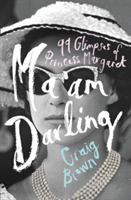

He saw her as charity patron, awkward dinner guest, tragic lover and terrifying virago.

He found her in aristocratic circles and among posh people playing at artistic squalor in Sixties London. Brown first came across her while working on other projects, at which point he discovered that Margaret was simply everywhere: ‘ Everyone seems to have met her at least once or twice, even those who did their best to avoid her.’ And he became obsessed. While her sister kept as low a profile as possible, Margaret was the partier, the modern woman-about-town, the drinker, the drama queen and the ubiquitous guest at ambitious parties. Nowadays, everyone seems content to interpret her silence as wisdom’), while Margaret bubbled over with all that was sharp, opinionated and difficult. Brown notes that Elizabeth II has become a master at saying nothing in particular (‘ the Queen’s technique of giving nothing away has paid dividends. “But that’s what she’s there for,” explained the Princess.Īnyone who has watched The Crown knows about the contrast between our reliable, doughty, serene, uneventful Queen and her tempestuous younger sister. Once, when Gore Vidal was gossiping with Princess Margaret, he told her that Jackie Kennedy had found the Queen ‘pretty heavy going’. This is an achievement, not a failing: it was her duty and destiny to be dull, to be as useful and demonstrative as a postage stamp, her life dedicated to the near-impossible task of saying nothing of interest.

Yet, miraculously, the Queen has managed to avoid saying anything striking or memorable to anyone. must surely have met more people than anyone else who ever lived. While the result certainly shows Margaret in all her unreformed brattishness, it also has a certain sympathy for a woman who ended up becoming a caricature of herself, with few ‘friends’ whom she could really trust. He doesn’t pull his punches, but he is not without compassion for Margaret’s fate. Brown has delved deep into a dizzying range of memoirs, diaries, autobiographies, hearsay, rumours and interviews to create a memorable picture of the Queen’s younger sister. Although standard, respectful royal biographies hold little interest for me – much better to read about people from a few hundred years ago, because the deference has worn off – this proved to be an engrossing read, bubbling over with bon mots and eye-opening stories. I suspect I’m not the only viewer of that surprisingly absorbing series who has sought out Craig Brown’s delicious, scurrilous, gossipy, genre-bending biography of Princess Margaret. After finishing the Netflix series of The Witcher, we decided to move on to something more conventional and, since neither of us had yet seen it, plumped for The Crown.


 0 kommentar(er)
0 kommentar(er)
